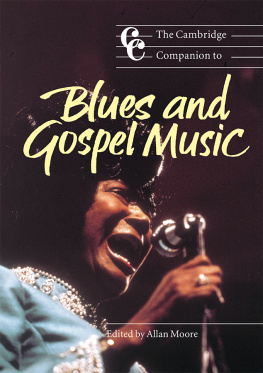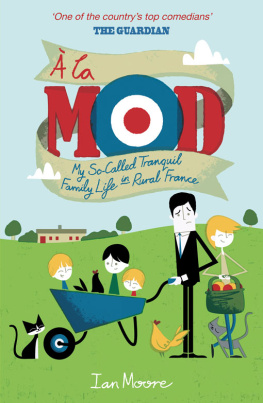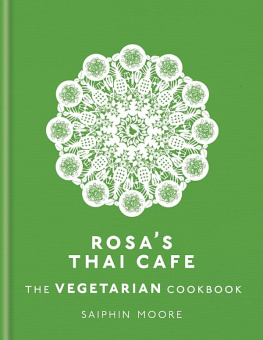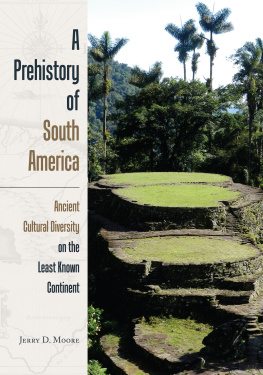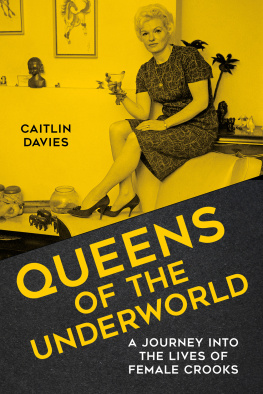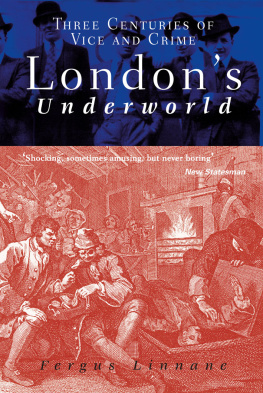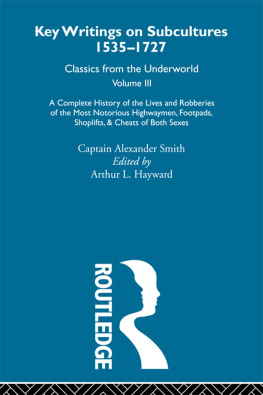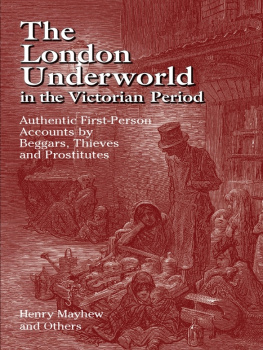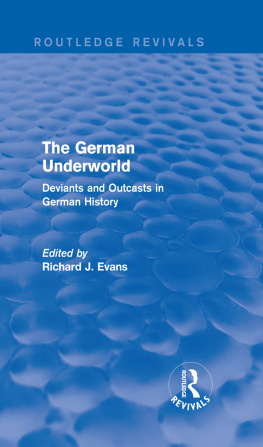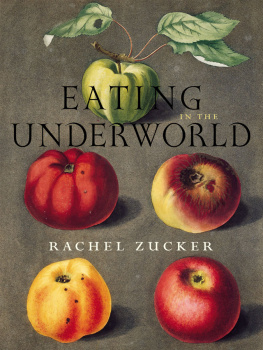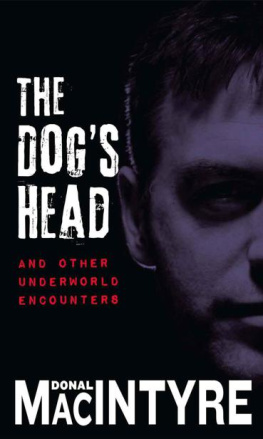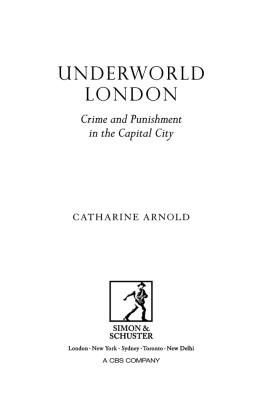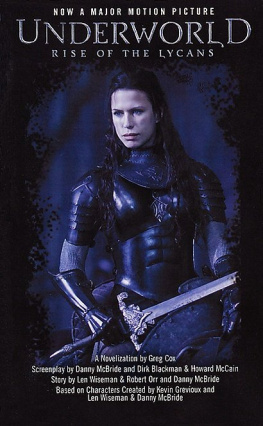Moore - Con men and cutpurses: scenes from the Hogarthian underworld
Here you can read online Moore - Con men and cutpurses: scenes from the Hogarthian underworld full text of the book (entire story) in english for free. Download pdf and epub, get meaning, cover and reviews about this ebook. City: England;London;London (England, year: 2010;2004, publisher: Penguin Group USA, Inc., genre: Detective and thriller. Description of the work, (preface) as well as reviews are available. Best literature library LitArk.com created for fans of good reading and offers a wide selection of genres:
Romance novel
Science fiction
Adventure
Detective
Science
History
Home and family
Prose
Art
Politics
Computer
Non-fiction
Religion
Business
Children
Humor
Choose a favorite category and find really read worthwhile books. Enjoy immersion in the world of imagination, feel the emotions of the characters or learn something new for yourself, make an fascinating discovery.
- Book:Con men and cutpurses: scenes from the Hogarthian underworld
- Author:
- Publisher:Penguin Group USA, Inc.
- Genre:
- Year:2010;2004
- City:England;London;London (England
- Rating:5 / 5
- Favourites:Add to favourites
- Your mark:
- 100
- 1
- 2
- 3
- 4
- 5
Con men and cutpurses: scenes from the Hogarthian underworld: summary, description and annotation
We offer to read an annotation, description, summary or preface (depends on what the author of the book "Con men and cutpurses: scenes from the Hogarthian underworld" wrote himself). If you haven't found the necessary information about the book — write in the comments, we will try to find it.
Moore: author's other books
Who wrote Con men and cutpurses: scenes from the Hogarthian underworld? Find out the surname, the name of the author of the book and a list of all author's works by series.
Con men and cutpurses: scenes from the Hogarthian underworld — read online for free the complete book (whole text) full work
Below is the text of the book, divided by pages. System saving the place of the last page read, allows you to conveniently read the book "Con men and cutpurses: scenes from the Hogarthian underworld" online for free, without having to search again every time where you left off. Put a bookmark, and you can go to the page where you finished reading at any time.
Font size:
Interval:
Bookmark:
CON MEN AND CUTPURSES
When you read Con Men and Cutpurses you start to get close to the authentic voice of eighteenth-century England. Court transcripts, travel reports, amateur memoirs and hack biographies all offer their own pungent and highly partial version of events Kathryn Hughes,
Literary Review
An excellent anthology full of fun and interest, and a fascinating introduction to the criminal world of our ancestors Peter Earle, The Times Literary Supplement
There is a rich seam of depravity and misfortune here, carefully mined by Lucy Moore who dishes up a good deal of dirt without wallowing in it too gleefully highly enjoyable John Preston, Yorkshire Post
The stink, bawdiness, cruelty and criminality that characterized London during the life of the artist, William Hogarth, come vividly to life in this fascinating book Belfast News
Lucy Moore has produced an engrossing sampler of villains lives, culled from original accounts such as the Newgate Calendar Will Cohu, Daily Telegraph
Absorbing Anyone with romantic delusions about 18th-century London should dip into this book, a compendium of poverty, crime and cruelty (much of it judicial) that makes our own more sanitized times seem like an absolute blessing Sam Phipps, Scotsman
ABOUT THE EDITOR
Lucy Moore was born in 1970. She was brought up and educated in Britain and the United States before reading history at Edinburgh University, and now lives in Gloucestershire. She is the author of The Thieves Opera and Amphibious Thing: The Life of Lord Hervey.
Scenes from the Hogarthian Underworld
Edited by LUCY MOORE

PENGUIN BOOKS
PENGUIN BOOKS
Published by the Penguin Group
Penguin Books Ltd, 27 Wrights Lane, London W8 5TZ, England
Penguin Putnam Inc., 375 Hudson Street, New York, New York 10014, USA
Penguin Books Australia Ltd, Ringwood, Victoria, Australia
Penguin Books Canada Ltd, 10 Alcorn Avenue, Toronto, Ontario, Canada M4V3 B2
Penguin Books India (P) Ltd, 11, Community Centre, Panchsheel Park, New Delhi 110 017, India
Penguin Books (NZ) Ltd, Private Bag 102902, NSMC, Auckland, New Zealand
Penguin Books (South Africa) (Pty) Ltd, 5 Watkins Street, Denver Ext 4, Johannesburg 2094, South Africa
Penguin Books Ltd, Registered Offices: Harmondsworth, Middlesex, England
First published by Allen Lane The Penguin Press 2000
Published in Penguin Books 2001
Introduction and headnotes copyright Lucy Moore, 2000
All rights reserved
The moral right of the author has been asserted
Except in the United States of America, this book is sold subject
to the condition that it shall not, by way of trade or otherwise, be lent,
re-sold, hired out, or otherwise circulated without the publishers
prior consent in any form of binding or cover other than that in
which it is published and without a similar condition including this
condition being imposed on the subsequent purchaser
EISBN: 9780141906034
Imagine a damp winter morning in the middle of the eighteenth century at Tyburn, now Marble Arch. In those days, Tyburn was at the edge of London: the newly-built West End houses of the nobility reached up to it from the south-east, and the villages of Hampstead in the north and Kensington, with Chelsea past it to the south-west, were just visible in daylight. But this early it is still dark, and misty, and the people jostling around you climbing up the temporary wooden stands known as Mother Procters Pews to ensure the best view later, quarrelling over the price of an apple or a ballad-sheet are like shadows.
Fresh straw is strewn on the ground, and there is the clean smell of cold mud, but mostly the smells are unpleasant, aggravated by the close anonymity of the crowd: the stale sweat that comes after a night of drinking, rotten stumps of teeth that have never been cleaned, ragged clothes taken off not for sleeping nor sex nor disease. The rich will come later, slumming, and pay for their places high up in the stands (although they could not claim to be much cleaner); these are poor people, here to celebrate the life and death of one of their own.
The route from Newgate Prison, next to the Old Bailey, runs by the church of St Sepulchre, where as the condemned men pass the bells toll for their souls, through the meat-market at Smithfield and past the taverns and whorehouses of Holborn and Covent Garden and Soho up to Oxford Road (now Oxford Street) and on to the makeshift stadium at Tyburn. The victim our hero sits in a jolting, open cart, his cold hands unbound, between two chaplains repeating like a dirge the need for salvation to a man who has seen few instances of mercy or hope in his short life. Ahead of him is the carriage carrying the Ordinary, or head chaplain of Newgate; half-a-dozen pike-bearing Javelin Men wearing the livery of the City of London bring up the rear on horseback. He is enclosed by the representatives of what the cynical might call hypocritical piety one eighteenth-century Ordinary not only published accounts of his charges last days, which most of them did, but also ran a profitable funeral business for them on one side, and those of an inefficient, parochial system of justice on the other. It is no surprise that the men on the tumbrel pride themselves on dying unbowed and unrepentant before their peers.
Finally, after the prayers have been said by the chaplain, a coin pressed into the palm of the executioner and his last words cried out by the dying man, the cart lurches off out from under his feet and, as the saying went, with a stiff neck and a wet pair of breeches, he swings out into the hereafter. This moment on the gallows is the final breath of the condemned man but it is the starting point, and central focus, of the following pieces of writing that document and describe criminal life in eighteenth-century London.
The criminals heroic identity and the tradition
of criminal literature
Although some criminals hanged at Tyburn were not working class, the majority were young and poor, and determined to assert with a flourish their freedom from the restrictions of the life that had driven them to crime. As the pirate Captain Bartholomew Roberts asserted in Captain Johnsons 1724 A General History of the Robberies and Murders of the Most Notorious Pyrates: In an honest service, there is commonly low wages and hard labour; in this [a life of crime], plenty, satiety, pleasure and ease, liberty and power; and who would not balance creditor on this side, when all the hazard that is run for it at worst, is only a sour look or two at choking? No a merry life and a short one, shall be my motto. Roberts was one of the lucky ones. He escaped the gallows but died in a sea battle, having ordered his men to throw his body overboard if he was wounded and might be captured.
Poor women bore a double burden of discrimination as well as poverty; and so if they dared, the advantages of turning to crime were commensurably greater. Although Moll Flanders is fictional, her story illustrates the ways in which a woman might try to escape the curse of being no more than a chattel by viewing herself as a commodity that she rather than a father or husband or master might exploit. The women who dressed as men, like the pirates Mary Read and Anne Bonny, had courage and ambition which only living as a man in a mans world could satisfy; both, apparently, were highly attractive to men, both freely used their femininity and neither seems to have disguised herself for any sexual reason in fact, both dropped their disguises with alacrity at the prospect of romance. The thief Sarah Stanley, on the other hand, who was described as being of masculine mien, may well have dressed as a man and joined the army because she did not want to be a woman at all.
Font size:
Interval:
Bookmark:
Similar books «Con men and cutpurses: scenes from the Hogarthian underworld»
Look at similar books to Con men and cutpurses: scenes from the Hogarthian underworld. We have selected literature similar in name and meaning in the hope of providing readers with more options to find new, interesting, not yet read works.
Discussion, reviews of the book Con men and cutpurses: scenes from the Hogarthian underworld and just readers' own opinions. Leave your comments, write what you think about the work, its meaning or the main characters. Specify what exactly you liked and what you didn't like, and why you think so.


